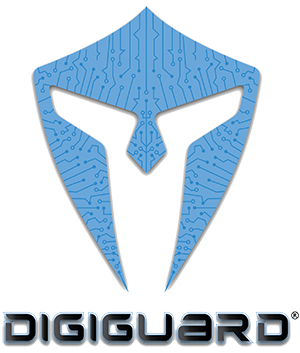Best Malware Removal
DIGIGUARD can remove malware from your websites, file systems and databases. Our team of experts can respond to cybersecurity incidents, remove malicious software and review the security of your system to get your critical business functions running safely. We will help your business respond to and recover from malware. Our consultants help your business remove red flags and blacklist status, security blocks, fraud alerts and site warnings from your company websites. We remove backdoor code so cybercriminals cannot return at will. Malware continually evolves and can include these common threats:
- Viruses – Malicious software attached to a document or file that executes its code and spreads from host to host, sometimes lying dormant until a file is opened. Viruses can cause significant operational disruption and data loss.
- Worms – Malicious software that quickly replicates and spreads to devices on the network. Worms can severely disrupt the operations of a device and cause data loss.
- Trojan viruses – Disguised as helpful software, but once downloaded, can access sensitive data and then modify, block, or delete the data.
- Spyware – Malicious software that runs secretly on a computer and reports back to a remote user. Spyware targets sensitive information such as financial and personal information and can grant remote access to cybercriminals with techniques such as keystroke logging used to steal passwords.
- Adware – Malicious software used to collect data on your computer usage and provide advertisements. While not always dangerous, it may cause slowing issues for your system. Adware can redirect your browser to unsafe sites or contain viruses or spyware.
- Ransomware – Malicious software that gains access to sensitive information in your system, then encrypts that information so that you cannot access it, and then demands a ransom for the data to be released.
- Fileless Malware – Malware that operates from a computer’s memory, not from files on the hard drive. Because there are no files to scan, it is harder to detect than traditional malware.
- Rootkit – Designed to take remote administrative control of a device. Once installed, the rootkit can track everything done on the device, run files, install programs and additional malware, and modify software, including anti-virus programs.
Malware Symptoms
Malware infections are more likely to occur on sites that have not been updated. Once a breach occurs, the malware must be removed before safety updates can be effective. Malware infections can cause harm to your business by stealing or compromising sensitive and private data, or by alerting your customers, vendors, regulators and suppliers that there are cybersecurity issues at your company. Our consultants can quickly scan and locate malware and restore safe function. Here are warning signs of a malware infection on your network or website:
- The site has been blacklisted
- Site crashes
- The site has a malware infection
- Unusual files or folders detected on the site
- Site is not loading, or loads slowly
- Internet traffic increases
- Site is sending emails on its own
- The company received a malware alert
- There is a warning about the site
- The site has been shut down by host due to malware
- Unusual redirects on the site
- A security solution is disabled
Malware Recovery and Protection Services
DIGIGUARD provides comprehensive cybersecurity services for SMBs. After removing malware from your system, we scan for needed updates and can supply additional malware protection. Our experts can suggest other ways to improve IT security, including testing, staff training and policy updating.
Contact DIGIGUARD today for a cybersecurity assessment and malware removal services.


